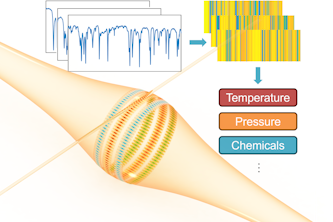Fate of biotech pesticides on environment gets closer look
Kimberly Parker’s CAREER Award focuses on pesticides that use double-stranded RNA as active agent

As the world’s population increases toward an estimated 9.7 billion people by 2050, safe and sustainable agricultural practices are vital to ensure a steady food supply. Pesticide use reduces the loss of crops to pests, but the impact of those pesticides on the environment as they break down remains problematic.
Kimberly Parker, assistant professor of energy, environmental & chemical engineering in the McKelvey School of Engineering at Washington University in St. Louis, will study the environmental fate of pesticides that use double-stranded RNA (dsRNA) as their active agent with a five-year, $500,480 CAREER Award from the National Science Foundation. The NSF CAREER awards support junior faculty who model the role of teacher-scholar through outstanding research, excellence in education and the integration of education and research within the context of the mission of their organization. One-third of current McKelvey Engineering faculty have received the award.
Specifically, she will identify the physical processes that degrade dsRNA pesticides in the environment, including in soils, surface water and on the surfaces of leaves. By identifying these processes, the work will advance knowledge on the environmental fate and persistence of nucleic acids, including microbial genetic markers.
While researchers in the environmental engineering field are successful in studying conventional synthetic chemicals used in agriculture, the novel products recently enabled by biotechnology, such as the RNAi pesticides, are not typically studied. There are substantial investments in these new products because they are crucial to maintaining U.S. competitiveness in agriculture, but the U.S. needs to adapt a regulatory framework that supports the safe and sustainable use of these products, she said.
“My long-term vision is to position environmental engineers to address emerging questions about novel products enabled by biotechnology,” she said. “Biotechnology is considered a disruptive technology that is leading to rapidly developing products that we’ve never seen before in agriculture and other industries.”
The research builds on Parker’s previous work into RNA pesticides, which can be genetically engineered into agricultural crops to give plants their own defense against pests. Until Parker and her lab published their measurement technique in 2020, there was no method to measure the amount of the pesticide present in the agricultural soil at relevant concentrations. By studying RNA pesticide degradation, her group will illuminate the potential impacts of this pesticide in the environment, for example, to beneficial species such as pollinators.
Parker plans to train environmental engineering students at Washington University to contribute to the risk assessment of emerging biotechnology products through research and project-based learning as well as a graduate student-led seminar series.
As part of the grant, Parker will work with the university’s Institute for School Partnership to identify area high schools where she will offer a scalable Supermarket Science program to teach students about genetically-modified (GMO) crops, pesticides, agricultural sustainability, and the environmental benefits and impacts of biotechnology used in food production.
“We are often confronted with choices as a consumer that lead to questions such as ‘What does GMO mean?’ and, ‘Is buying food labeled as non-GMO important or not?’” she said. “Rather than sorting GMO crops as either good or bad, we will be supporting a more nuanced understanding of potential benefits and risks, while also engaging students in the science used to develop biotechnology and assess its safety.”




